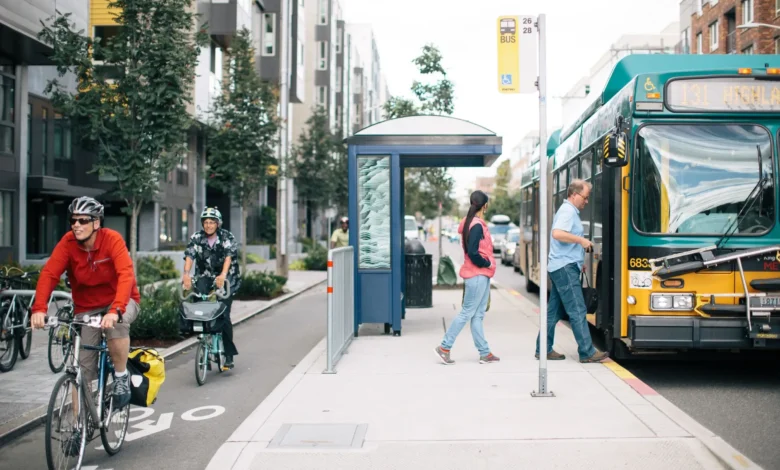Reimagining Public Transport Branding for the Digital Age

Public transport has always been more than a way to get from one place to another; it’s a reflection of how communities move, connect, and interact. As cities become smarter and digital technology continues to reshape consumer expectations, the branding of public transport systems is evolving too. In this new landscape, design, storytelling, and digital innovation are working hand in hand to create passenger experiences that are not only efficient but also emotionally engaging. For agencies leading this transformation, developing effective campaigns is now about blending data, creativity, and public trust into a seamless journey.
The Changing Face of Public Transport Branding
Traditionally, public transport branding was about functionality: clear signage, consistent color schemes, and service information. While these elements remain crucial, today’s branding extends far beyond visual identity. It’s now about shaping how people feel when they use a service, fostering trust, and creating emotional resonance.
Digital technology has turned transport systems into living brands. Every touchpoint, whether a passenger’s first interaction on a mobile app, a digital timetable display, or the interior design of a carriage, contributes to how the public perceives the service. This shift means that branding is no longer just static graphics on trains or buses but a dynamic ecosystem that tells a story of innovation, accessibility, and reliability.
Connecting Design with Experience
In the digital age, good design does more than look appealing; it enhances the passenger experience. Wayfinding systems are being integrated with real-time information displays, while digital signage allows for adaptive communication that responds to weather, events, and time of day.
Branding now plays a crucial role in making these interactions intuitive. Consistent fonts, colors, and iconography help passengers navigate complex systems with confidence. The tone of messaging (friendly, informative, and inclusive) reinforces trust and comfort, ensuring that commuters feel supported throughout their journey.
Incorporating digital screens and interactive touchpoints has also allowed transport authorities to humanize their services. For example, displaying live updates, environmental statistics, or even local art not only informs but inspires. It’s a subtle way to strengthen brand identity while improving daily commutes.
Digital Transformation and Data-Driven Branding
The digitalization of transport networks has unlocked a wealth of opportunities for more responsive and personal branding. With real-time data, transport authorities can better understand passenger behavior: what routes are busiest, what times see the most engagement, and where pain points exist.
This insight allows for adaptive communication strategies. Digital advertising, mobile alerts, and interactive ticketing platforms can now be personalized based on location and behavior. This creates an ecosystem where branding and communication evolve alongside the needs of passengers, offering relevant and timely information that enhances trust and satisfaction.
Sustainability as a Brand Value
Sustainability has become a defining pillar of modern public transport branding. The digital age has given rise to a generation of eco-conscious travelers who expect transparency and responsibility from the systems they use.
Transport networks are responding by aligning their branding with environmental goals. Electric buses, carbon-neutral rail initiatives, and recyclable materials in station design all contribute to a brand narrative centered on progress and purpose. Communicating these values authentically, through visual identity, storytelling, and digital outreach, helps transform sustainability from a technical feature into a core part of a transport brand’s identity.
This alignment between sustainability and branding isn’t just good ethics. It’s good business. It builds loyalty among passengers who see public transport as part of a sustainable lifestyle rather than just a necessity.
Building Emotional Connections Through Storytelling
In a digital world saturated with information, emotional connection is what sets great brands apart. For public transport, storytelling can be a powerful tool to shift perceptions. By highlighting the people behind the system, drivers, engineers, and passengers themselves, brands can make public transport feel personal and community-driven.
Digital campaigns that feature authentic voices or celebrate milestones in service improvements resonate more deeply than technical updates alone. This approach transforms transport networks from faceless entities into relatable, evolving organizations that care about the cities they serve.
Integrating Technology Seamlessly
From contactless payments to AI-driven route planning, technology is rapidly improving the efficiency of public transport. But the true challenge for branding lies in integrating these advancements in a way that feels natural, not overwhelming.
Clear communication is key. Whether mobile ticketing apps or digital travel assistants, when passengers are introduced to new technologies, branding must guide them through the experience with simplicity and reassurance. Visual consistency across platforms ensures that users always know they are engaging with the same trusted service, regardless of the device or location.
A well-designed digital ecosystem gives passengers a sense of control, making technology feel like a companion rather than a barrier. When executed effectively, this balance turns innovation into confidence, which is an essential ingredient of strong branding.
Collaboration Between Agencies and Operators
Reimagining public transport branding is not a task for designers alone. It requires collaboration between transport authorities, creative agencies, and technology providers. Each partner plays a unique role: authorities provide insight into passenger needs, technologists offer innovation, and branding specialists shape these insights into meaningful experiences.
Agencies that specialize in effective rail campaigns understand how to translate operational excellence into emotional engagement. Through strategic storytelling, visual design, and targeted digital outreach, they help transport systems connect with passengers on both rational and emotional levels.
The Future of Public Transport Branding
The future of transport branding lies in integration, where every element of a commuter’s journey, from planning to arrival, feels unified and effortless. As artificial intelligence, smart cities, and sustainable mobility continue to evolve, branding will play an even more vital role in humanizing these complex systems.
Transport networks will increasingly be judged not only on reliability but on how well they communicate their values, embrace innovation, and improve quality of life.




